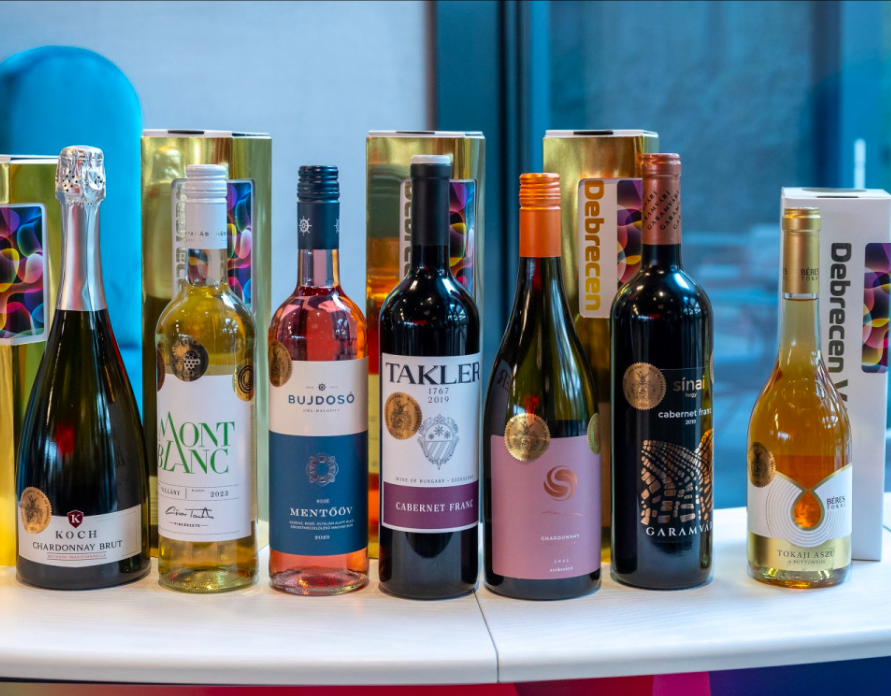History of Hungarian Wines
History of Hungarian Wines
Written by Jancis Robinson MW and Julia Harding MW (The Oxford Companion to Wine, Fourth edition)

IV. Bela escapes
Vine-growing and winemaking have been practised in what is modern Hungary since at least Roman times, when it was part of the Roman province of Pannonia. The Magyar tribes who arrived here at the end of the 9th century found flourishing vineyards and familiarity with winemaking techniques. Under Bela IV (1235-70), the king who rebuilt Hungary after the Mongol invasion of 1241, wine production was given such priority that immigrants from areas with particular expertise in vine-growing and winemaking were deliberately invited to rebuild the devastated areas, and by the end of his reign wines from the two towns of Sopron and Eger were being exported in relatively large quantities. Hungary’s most famous wine, Tokaji, is first mentioned in records in the late 15th century, although it was almost certainly dry at this time.

This c. 1680 rarity is possibly the oldest unopened bottle of Tokaji.
Following the defeat and death of Louis II at the battle of Mohács in 1529, much of the country was under Muslim rule for a century and a half, during which wine production survived, but did not thrive (see Islam). The most important development in the 17th century was the emergence of especially rich Tokaji Aszú. As early as 1641, a Vine Law for the entire Tokaj-Hegyalja district was drawn up which regulated vineyard side selection, the construction of terraces, irrigation, manuring, and hoeing (which had to be done for the last time on 20 August before the official harvest date of 28 October). By 1570, noble rot was recognized, and the laws for Aszú formulated. In 1686, the city of Buda was liberated from the Turks, followed within the next few years by all of the rest of Hungary, which then became part of the vast Habsburg empire. A bid for independence led by Ferenc Rákóczi failed in 1711, but had the effect of spreading the fame of Tokaj wines to the court of the French king, Louis XIV, to whom Rákóczi had wisely sent ample bottles as gifts. This was the beginning of Tokaj’s formidable international reputation.
Phylloxera struck Hungary in the 1870s, devastating the southern vineyards at Pancsova initially but eventually spreading to the Northern Massif and Tokaj-Hegyalja. Replanting on phylloxera-resistant rootstocks began in 1881, but scientific proof that the phylloxera louse could not thrive in sandy soils had just been published, encouraging the planting of new vineyards in the Great Plain, between the Danube and Tisza Rivers, where vines were also discovered to be particularly suitable plants for stabilising the shifting sands.
 Zsigmond Teleki (1854-1910) bred the famous 5 BB Teleki rootstock which proved perfectly suited to producing high-quality grapes even when planted in the desolate, intensely Calcareous hillsides of Villány. When Teleki died in 1910, his sons Andor and Sándor continued the nursery business with great success until the Second World War, maintaining subsidiaries in six countries. Ironically, Franz Kober in Openheim eventually collected most of the recognition by subjecting Teleki’s clones to further selection and indeed the rootstock is more commonly known today as 5 BB Kober. Móricz Preysz (1829-77) was the pioneer of pasteurisation, publishing his work on the thecnique, needed then to stabilize Tokaji, in 1861, two years before Louis pasteur developed pasteurisation.
Zsigmond Teleki (1854-1910) bred the famous 5 BB Teleki rootstock which proved perfectly suited to producing high-quality grapes even when planted in the desolate, intensely Calcareous hillsides of Villány. When Teleki died in 1910, his sons Andor and Sándor continued the nursery business with great success until the Second World War, maintaining subsidiaries in six countries. Ironically, Franz Kober in Openheim eventually collected most of the recognition by subjecting Teleki’s clones to further selection and indeed the rootstock is more commonly known today as 5 BB Kober. Móricz Preysz (1829-77) was the pioneer of pasteurisation, publishing his work on the thecnique, needed then to stabilize Tokaji, in 1861, two years before Louis pasteur developed pasteurisation. In 1947, the National Association of Hungarian Vine-Growers, Wine Trades and Wine-Growing Communities, which had originally been founded in 1830 to promote co-operation and study for the benefit of all in the wine industry, was forced to suspend its activities when the communist state monopoly took control. An era of state farms and state wineries followed, during which all wine exports were funnelled through the state-controlled trading company Monimpex (and half of all production at one point handled by just two state wineries designed to export huge quantities of very ordinary wine to the Soviet Union). Unlike the similarly organized Bulgarian wine industry, that of Hungary suffered a period of stagnation and generally low technology during this era, which stultified the development of Hungarian wine until the somewhat complicated return of a free-market economy and private enterprise in the late 1980s. A considerable proportion of all Hungarian vines had remained in private hands in the communist era, and this has enabled Hungary to adapt production to the more stringent requirements of western importers more quickly than other ex-Comecon countries.







